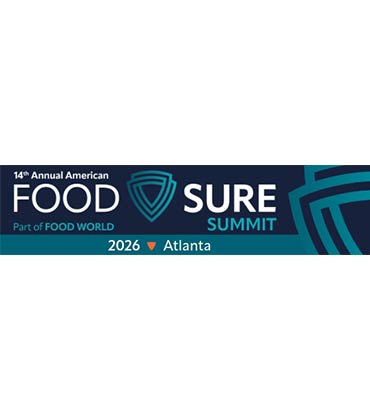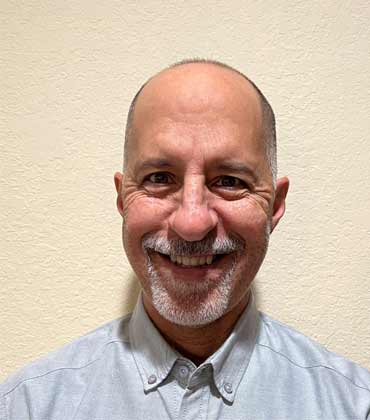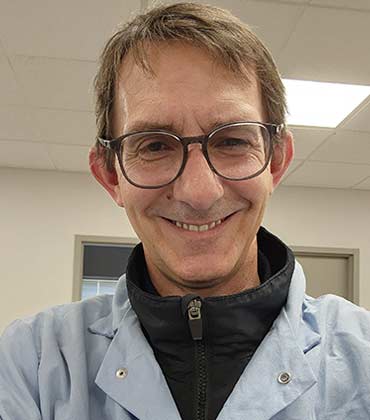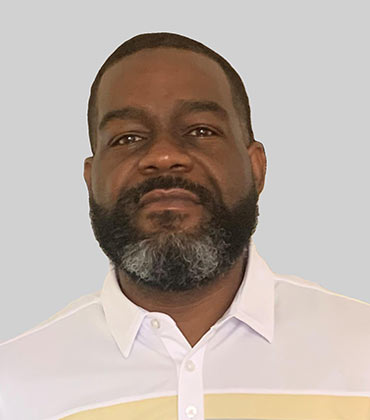THANK YOU FOR SUBSCRIBING
By Enrique Leon, AI Enterprise Architect, American Sugar Refining Inc
The Psychology of AI Credibility
By Christopher Smith, Corporate Sanitation Manager, Michael Foods
Delivering Safe foods through Effective Sanitation
By Michael Coley, Food Safety & Quality Manager, Symrise AG
Leading Food Safety Through Standards And Strategy

Food Safety Is Everyone's Business
Suzanne Finstad, Vice President of Food Safety and Quality Assurance (FSQA), Tyson Foods

 Suzanne Finstad, Vice President of Food Safety and Quality Assurance (FSQA), Tyson Foods
Suzanne Finstad, Vice President of Food Safety and Quality Assurance (FSQA), Tyson FoodsThe food production process has come a long way since its initial quality control days. In 2024, the food safety and quality assurance team at Tyson Foods isn’t just monitoring – we're firmly in the verification business. Even as food production grows increasingly automated, the human factor in food safety remains more important than ever. This means we can spend more time on the technical aspects of identifying and eliminating risks to food safety or quality – think of it as a shift from reactive to preventive. Ultimately, this evolution makes food safety everyone’s business, and that increases job satisfaction and pride in the product.
Technology is enhancing food safety on the plant floor in many ways that continue to evolve. One example involves minimizing transfer points. Every touch point, by either a team member or a piece of equipment, opens the door to the possibility of product quality degradation or waste. That means every transfer point you eliminate is a step toward optimizing production efficiency. For example, when the product moves from one line to the next, there’s potential for hang-ups and pileups, which means the food product might tear, break apart, or clump. This decreases uniformity and can even challenge a company’s cold chain management.
Another evolution is the growing use of vision technology for continuous real-time monitoring of production line integrity. Food makers aren’t the only ones to benefit. One study projects the overall machine vision market, spanning a range of industries, will reach US$ 19.7 Billion by 2028 and achieve a growth rate (CAGR) of 9.3% over five years.
Tyson Foods is committed to producing safe, healthy food. We’re trialing vision technology in a number of locations and applications to verify that our processes are functioning as intended. Like other companies in food production, we confront the hurdle that today’s machine vision systems struggle to see through the product or product residue, especially with value-added processes with breading and sauces. The good news is that the software behind the cameras uses AI to teach itself how to identify potential anomalies with increasing precision. This helps us find problems faster and react with greater speed.
At Tyson Foods, we are experimenting with innovations such as hyperspectral imaging, which can not only identify the presence of something but also identify what that something is. For example, as the production process at our state-of-the-art facility in Danville, Virginia begins with fresh product, machine learning-powered equipment inspects each piece. This human-like vision grading detects any foreign objects in the individual chicken breasts before their being ground and cooked into nuggets and strips, offering enhanced product safety and quality assurance.
Our Ready-to-Eat food-safe packaging environments benefit from the latest food safety product bagging equipment, along with highly effective metal detection and X-ray technology to maximize food safety and consumer protection. All of this is supplemented by the human factor: Team members perform multiple safety and quality checks of products each day.
"We have to make sure everyone understands their role in the process, including where and how they influence the product – even if they’re not actually touching it or even in the building where it’s made. People inherently want to do the right thing, so focusing on awareness and education will go a long way."
Another major advance is that the system, not a person, now monitors equipment settings in modern food production facilities. In many instances, the system will sound an alarm or cease operation when something is operating outside the target. This is a huge step forward in food safety because the FSQA team gets a continuous flow of information instead of point-in-time performance snapshots. It also eliminates the potential for human error. Lastly, because the system is self-monitoring, we are better able to identify the root cause when something goes wrong. That’s because we can start with the equipment settings instead of working backward from whatever was observed with the product or process performance.
More than ever before, our industry needs to recognize that food safety and quality don’t begin or end with the food safety and quality team. They’re the result of deliberate everyday actions by all team members – even those who don’t work in the production plant. For example, the health and welfare of the animals we harvest has a direct effect on meat quality. The suppliers we partner with and the materials we use in the processing plant need to produce to certain expectations that must be known in advance of the relationship, which means Procurement has a role. The engineers need to understand sanitary design and the need to ensure that processing equipment does not create a foreign material risk. The distribution team must have a good understanding of the cold chain and product rotation so that we get the product to the customer with plenty of shelf life and at the correct temperature.
We have to make sure everyone understands their role in the process, including where and how they influence the product – even if they’re not actually touching it or even in the building where it’s made. People inherently want to do the right thing, so focusing on awareness and education will go a long way.
The evolution of safety and quality assurance in food production is about far more than technology. It’s also about standards, practices, and the emerging understanding that people and machines accomplish more when they work together. Here are a few lessons learned to share as you consider your approach to food safety and quality in 2024 and beyond:
• Trust but verify. The equipment you purchased from vendors needs calibration and you need verification of that calibration.
• Conduct your own trial. Vendors likely have their own data or validation, but it may not apply to your ingredient, processing aid, or equipment.
• Stay open to new technologies and processes. Automation frees people up to focus on next-level solutions.
Most importantly, make it a resolution in 2024 to make food safety everyone’s business. It’s a win for everyone, especially the consumers and foodservice customers who rely on your brand.
Read Also















